If you're looking to get out of your comfort zone this is it, I couldn’t have asked for better organisation and a better team to accomplish this amazing achievement with. Thanks so much for everything.
Karlinos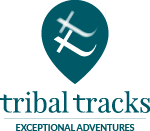
Location
Terrain
Difficulty
Accommodation and Meals
Hotel, Wild Camping
Duration
12 days
Meeting Point
Delhi
Annual Leave
10
Group Size
20
Seasons
March-June, September to Mid-November
Walking Distance
60km

Experience a unique two phase expedition, involving a spectacular Himalayan trek (Phase 1) and a unique conservation project (Phase 2).
Arrive in bustling Delhi - one of the great cities of the world, before flying to Bagdogra to transfer to the starting point of the trek, staying overnight in a heritage hotel in a hill station on the way.
Trek to one of the best view points in the Himalaya, Dzongri La (4200m), to witness the five summits of the holy mountain, Kanchenjunga, camp under the stars and experience the amazing flora and fauna along the way.
Visit and stay overnight in Darjeeling, the hill station famous for its tea plantations and providing respite from the heat to the British elite in the days of the Raj, before boarding a train to take you Phase 2 of the expedition.
Visit the pygmy hog breeding centre in Guwahati and the release sites in Manas National Park, where you will see this threatened and elusive species as well as the chance to see tigers, elephants, rhinos, wild buffalo, clouded leopards and a wild variety of spectacular wildlife. You will gain exclusive insights into critical conservation work, and the team behind saving the world's smallest pig, once thought to be extinct.
All the info you need
Trip Details
Join us for a remarkable expedition commemorating the 100th anniversary of Gerald Durrell, the founder of Durrell Wildlife Conservation Trust. This is a very special two-phase expedition, blending challenging trekking and camping in the shadow of the world's third highest mountain, with a unique behind the scenes insight into Durrell's vital wildlife conservation work.
In Phase 1, after travelling to West Bengal (the founder's birthplace) you will experience a challenging 5-day trek in Sikkim, trekking high up into the amphitheatre of the eastern Himalaya mountains, towards Kanchenjunga, the third highest mountain in the world. You will then travel by train (a bucket list experience in itself!) to Assam for Phase 2. Here you will visit Manas National Park and Guwahati joining the conservationists who work tirelessly to breed and protect the adorable pygmy hog, bringing them back from the brink of extinction.
All successful applicants have now been notified by email, with a link to the booking form. All booking forms must be completed, and £500 deposits paid by 15 July 2024 to guarantee your place on the trip. All successful applicants will be required to fundraise a minimum of £2500 which will help Durrell to continue its vital wildlife conservation work.***
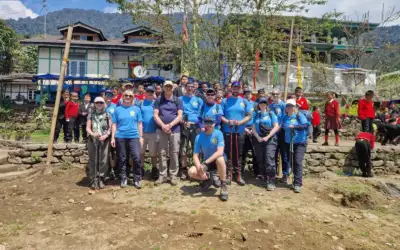
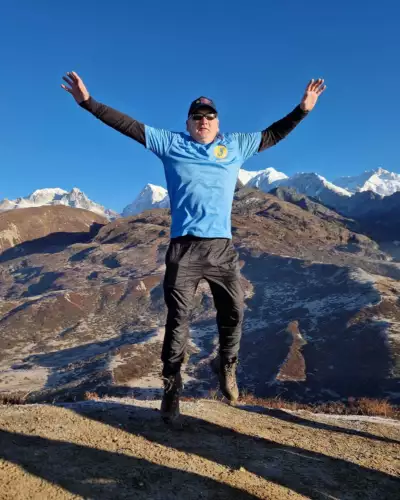
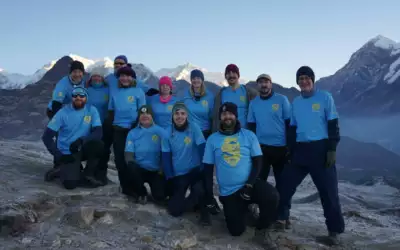
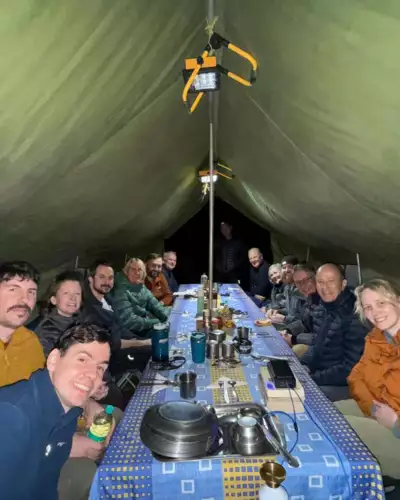
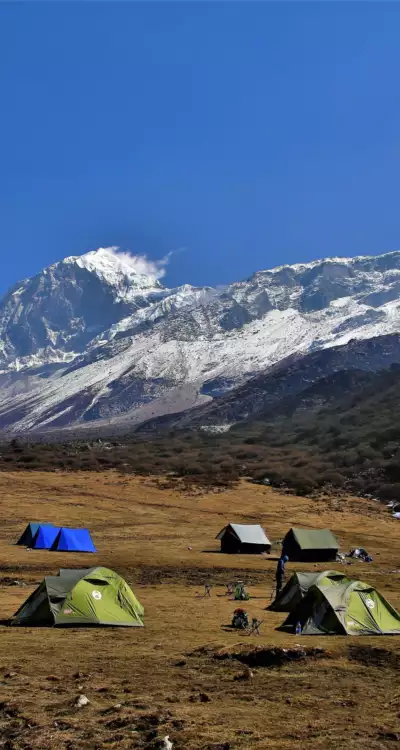
Trip Details
Discover the finer details of this unique expedition
It is an early start this morning as we take an internal flight to Bagdogra in West Bengal.
Leaving West Bengal (where Gerald Durrell was born), we drive into the state of Sikkim. Here, the foothills of the Himalaya became a summer retreat during the days of the British Raj in India, where the temperate climate of the hill stations around Darjeeling offered perfect conditions for growing tea. We travel to Pelling, one of these hill stations, which sits at 1800m above sea level, with breathtaking views of Kangchenjunga, the world's third highest mountain, and famous for its Pemayangste monastery. It also just happens to be an excellent start point for adventurous travellers and nature enthusiasts, like us.
We have a chance to explore before dinner, where we have a briefing from the team about what to expect from the days ahead, and then can rest in our nostalgic hotel.
Accommodation and Meals
Overnight 3.5* hotel, lunch, dinner.
We have a short drive to Yuksom, the ancient capital of Sikkim.
Here we will have an early lunch and then start to trek to Sachen, our final destination for today. It is a gentle start to the trek, and as we begin at 1750m, we take it nice and steady, trekking through forests of rhododendrons and magnolias, observing the orchids and primulas along the way. We cross three bridges and have a steeper uphill section, before reaching our camp ground at 2179m, where our tents and a delicious supper await.
Accommodation and Meals
Overnight camping, full board
This is a tough day, but we'll take it at a pace comfortable for us all.
Once we've crossed the Prek Chu river over a handy new suspension bridge, we'll have a long steady climb up to Bakhim at 2700m, where we'll have lunch. We'll continue through beautiful forests and moss-laden trails to the abandoned settlement of Tsoka (pronounced choka) at 2970m where we'll camp for the night.
Accommodation and Meals
Supported camp, full-board
Today we leave camp early, trekking to our highest point yet at just over 4000m.
We take it slowly and steadily, arriving in the early afternoon so we can rest an acclimatise. We trek through stunning scenery, of mixed temperate forests of magnolia, pine and more rhododendrons, before we get our first panoramic views of Kanchenjunga, the third highest peak in the world. Surrounded by no less than 14 peaks standing at over 20,000 feet, the views are incredible. We continue climbing, the forests growing ever sparser, until we arrive at our camp in Dzongri. We are surrounded by azalea bushes which are used as incense by the Tibetan, Sherpa and Sikkimese people.
Accommodation and Meals
Supported camp, full-board
Today we reach our goal as we summit Dzrongi Top, 4200m above sea level, trekking past hundreds of colourful, fluttering rectangular prayer flags.
At the top, you'll have awe-inspiring views of Kanchenjunga (8534m), Koktang (6147m), Pandim, and many more. You'll also see the Singalilla Ridge, which separates Sikkim from Nepal.
After taking a while to absorb these views, we'll head back down to Bakhim (2700m)
Accommodation and Meals
Supported camp, full-board
Today we drive to Darjeeling, the former British Hill Station which was a refuge from the steamy heat of Kolkata. |
Surrounded by the famous tea plantations, we will stay overnight here, learning about the history of the town, its Colonial past, and the vital part the tea plantations play in its economy. After our epic trek, we get a chance to be more of a tourist today!
Accommodation and Meals
Overnight hotel, full-board
After an early breakfast, we leave Darjeeling and drive to NJP Railway Station.
Here we catch the train to Bongaoin in Assam - an essential part of any trip to India! The train journey takes approximately 4 hours and we have plenty of time to soak up the views as we leave Sikkim behind and enter Assam. We meet our Assam team and then transfer to Manas, to our jungle retreat.
Tonight we will have a team dinner where we will meet the Pygmy Hog Conservation Programme Team. They will brief you on the days that follow, preparing you for the amazing insight you are going to get into the conservation project.
Accommodation and Meals
Overnight hotel, full board.
Today we'll venture into Manas National Park, into the heart of the Pygmy Hog conservation project.
We'll take a jeep ride in the Bansvari zone, see habitat maintenance activities in the Kuribeek area and take a trip to Mathanguri on the Bhutan border. We'll visit the Manas Heritage museum before stopping for lunch.
After lunch we'll explore the Bhuyanpara Zone - mostly grass land. If we're lucky we might catch sight of tigers, elephants, golden langurs and swamp deer. We'll visit the team's pygmy hog release site and learn why this work is so important.
Accommodation and Meals
Overnight hotel, full-board.
After breakfast, we'll travel to the Pygmy Hog Research and Breeding Center near Guwahati - around a 3.5hr drive. We'll stop en route for lunch.
This is the jewel in the crown of the project, having brought the hogs back from the edge of extinction - it will be fascinating!
We'll be able to see the hogs at close proximity (with some necessary biosecurity restrictions) and we'll enjoy tea together at the centre, where we will learn more about the programme. Tonight we will have a celebration dinner at our hotel to reflect on a fantastic trip.
Accommodation and Meals
Overnight hotel, full-board.
This is our final day in India.
After breakfast, we will have a tour of Guwahati. Guwahati is situated on the Brahamaputra River, one of the main tributaries of the Ganges, and has a fantastic, rich culture.
We head to the airport for an early evening flight back to Delhi.
Choose to return to the UK that evening, or if you want, we can help you to arrange an extension to your stay in India. *NB if you want to stay in Delhi before a flight this next day, we can help you arrange this overnight stop.
Accommodation and Meals
NA
Trip Details

| From/To | Nights | Total Cost (includes non-refundable deposit) | Non-refundable Deposit |
Single supplement | Fundraising Commitment |
Places | Enquiry | |
|---|---|---|---|---|---|---|---|---|
|
Mar 22, 2025 Apr 02, 2025 |
11 | £2935 | £500 | £490 | Places Available |
Trip Details
***All successful applicants have been notified by email. All booking forms must be completed, and £500 deposits paid by 15 July 2024 to guarantee your place on the trip. The total price of the trip is £2935, ground only. There will be two payments to be made (1) deposit of £500 upon booking, (2) the balance of £2435 (plus single supplement if selected) due 56 days before departure. See below for what is included and excluded.***
In a nutshell, almost everything!
This is what you will need to buy/source yourself.
Some charity trips will offer two models of payment, self-funded or minimum fundraising. What is the difference?
With self-funded, you pay the cost of the trip yourself (the deposit and the balance) and then on top of this, you fundraise for the charity independently. This means that 100% of the money you raise goes to the charity.
Minimum fundraising works slightly differently.
You pay the cost of the deposit yourself. Then, in addition you must pledge to raise a specific sum for the charity, called the Minimum Sponsorship Sum. This is specified on the booking form and is the sum you must raise after you have paid the deposit yourself. You fundraise for this amount. Then, at least ten weeks before you depart, you must give the charity at least 80% of the Minimum Sponsorship Sum. At that point, your place on the trip is guaranteed. The balance of 20% follows within a specified time after the conclusion of the trek (usually 4 weeks).
If you do not reach your fundraising target, you have the option of self-funding to reach your target or forfeiting your deposit and not going on the trip. Our advice is to begin fundraising as soon as you can and the charity will be able to help you with this!
It is important that you read the itinerary carefully, and take account of the rating we have given it.
Although our challenges are not technical, they do require a good degree of physical fitness. The conditions will require stamina and strength, which you should recognise and train for. This will be a much better experience if you are fit and prepared. You should feel comfortable walking 6-8 hours per day.
In setting the maximum size of our groups, we take a number of factors into account.
Altitude, degree of difficulty, the terrain, the climate and time of year, all determine the maximum group size. Sometimes it will be 20, sometimes it will be 8-14, but safety is always our priority.
You will be accompanied by a Tribal Tracks UK Leader, Mountain Leader qualified, as well as supported by our local, in-country guides.
It is a requirement of Tribal Tracks booking terms and conditions that each supporter must hold their own travel insurance, which covers the trip and the activities they are doing. Read more here.
We advise you to put insurance in place as soon as possible, ideally on booking so you are covered immediately. Your insurance must be valid and in date, covering the entire period that you are travelling for, including the return journey home. It should cover medical and personal accident risks, and should include repatriation costs and air ambulance or helicopter rescue services, where appropriate.
Tribal Tracks has 100% Financial Protection and has a trust account with the Protected Trust Service, member number 5566.
This means that all client monies paid to Tribal Tracks are held in our dedicated trust account, which is supervised by an independent trustee. This means that in the very unlikely event that Tribal Tracks ceases to trade, your money is safe. For more information, please visit this link. Any flights booked for you by Tribal Tracks will be ATOL-protected under our own ATOL certificate.
Tribal Tracks considers the safety of all of its participants and staff to be a top priority, and as such we have thorough safety systems in place.
In the event of an injury, we have an evacuation plan in place for all elements of the trek route. We do ask that you look after yourself during the trek in the following way, as this will help avoid unnecessary problems:
We know that the unexpected can happen.
While you are away, things can happen at home and people may need to get in contact with you. This can be tricky when you are in remote areas. So, shortly before departure, we provide you with an Emergency Procedure document to distribute to your nearest and dearest. This sets out how to contact Tribal Tracks and the steps Tribal Tracks will then take to get in contact with you.
It is really important that you are well prepared for your physical challenge and that you are confident that you will be able to fully participate.
Although our leaders are well trained to deal with different capabilities, if they have any concerns about someone’s ability to safely partake in the trek, or their impact on other people’s enjoyment, we authorise them to take necessary action which, in some circumstances, may involve asking someone to step out of the trek. Although this is a very rare occurrence, by booking this trip you agree to section 11 of our Booking Conditions which clearly states that our leaders have the authority to do this. In these circumstances, we will ensure anyone sitting out is safely provided for and offered alternative options where possible. Refunds will not be provided for activities missed and customers may be liable for additional costs incurred.
At Tribal Tracks, Responsible Travel is enormously important to us, and our commitment to responsible travel is evidenced in every itinerary that we prepare.
Core to our business is the belief that holidays can and should be enjoyable to the traveller but should be conducted in a socially, environmentally and economically responsible manner which brings benefit to local communities. This is implemented through a variety of measures which can be found in our Responsible Travel policy. We encourage you to read this and to play your own part in travelling responsibly.
Ground only trips
If your trip is based on a ground only price you will need to arrange your own international flights. You can booked flights 11 months prior to departure. If you would like Tribal Tracks to book your flights they will need to be paid in full when confirmed.
Trip Details
Trip Details
The trek is a challenge. We will be walking for a long time over sometimes challenging terrain with steep ascents and descents.
The best way to build endurance fitness is to start with some gentle walks and gradually build up both the distance and duration over the next few months. In the last 2 months, we would recommend to go out and do long days, ideally in the hills, to build up the strength in your legs. About a week before the trek, limit any training to short walks – you want to have fresh legs at the start!
For the trek you should be comfortable trekking between 6 - 8 hours per day, but remember we have all day to achieve the distances and will not be going at racing snake pace. It may sound obvious, but make sure that you are walking properly, hitting the ground with your heel first, then rolling onto your toe, which pushes you onto the next step (this will help reduce the risk of shin splints and tendon pulls). Walk with your head up, eyes forward and shoulders level.
It is a good idea to develop a level of cardiovascular fitness (exercising and strengthening your heart and lungs). This comes from running, cycling or swimming for between 20 minutes and an hour, and will really help develop your endurance fitness. Three sessions a week is normally advised, increasing time and distance over time.
Replicate conditions in training i.e., use all the kit you will be using and try your walking poles if you want to use them.
It is important to pack so that you know where everything is. Separating kit into different packing cubes, or even plastic bags can really help with this. You can pack by item (eg socks and pants in one cube, tops in another etc) or by day, putting your entire outfit for that day together in one place. Taking an extra bag or cube to separate dirty kit is a great idea.
You will have two bags on the trip - your main bag and your back pack.
You should operate on the basis that you will not have access to your main bag during the day and while you are trekking. This means that it is important to have everything you need in your back pack. Waterproofs should go in the bottom, together with an extra layer, sunscreen and sunglasses, plus hat and gloves (if you are in a colder climate). You should also have your water bottles, and any specific snacks, medicines or first aid items you want to take, such as zinc tape and blister plasters. Baby wipes/toilet roll and nappy sacks are also essential for going to the toilet while you are trekking - we will explain more in the pre-departure briefing!
In the event of an injury, we have an evacuation plan in place for all elements of the trek route. We do ask that you look after yourself during the trek in the following way, as this will help avoid unnecessary problems:
We will brief you in the pre-departure briefing as to the catering specifically for your trip. However, as a guide, each morning you will be provided with a very filling local breakfast, usually accompanied by tea or coffee. Lunch will be during your trek and will be prepared by the team of cooks or we will utilise local restaurants or teahouses. Food will always be ample and tasty. If wild camping, dinner will be in the dining tent and will be traditional, freshly prepared food. If you are staying in a hotel or teahouse, dinner will be served there. Water, tea and coffee will be served and alcohol will usually not be available, although there will be some exceptions. We will provide 4 litres of drinking water per person per day. You will need to fill up 2 litres at breakfast and another 2 litres at lunchtime.
Please ensure that you have notified us before departure if you have any specific dietary requirements or allergies as we can cater for most.
Please inform us of any dietary requirements or allergies before you travel, and preferably at the time of booking. We can cater for almost all diets, but only if we know about them beforehand.
Sleeping bags are designed to work by trapping your body heat in the down surrounding you. If you wear lots of layers, your body heat will not be able to escape as effectively, and you will be cold. Wearing a thin thermal layer is ideal. It does sound counter intuitive, but we promise that it works!
Putting your clothes for the next day in the bottom of your sleeping bag will also help with warmth, as it will fill up any spare space around your feet, and it will mean your clothes are nicely warmed up in the morning.
If you find it difficult to sleep without a pillow, we recommend that you take a travel pillow and a regular pillowcase with you. Put your pillow in the pillow case, and use your down jacket/layers to fill out the pillowcase, you will end up with a pretty decent pillow!
And as for stuff or roll when it comes to packing your bag away? We are very much in the stuff camp! Read more here.
There will be early morning starts, typically around 0600 - 0700hrs, so that the team can set off on the trek in good time. It is important that you pack up your kit before breakfast and leave your bag outside your tent or accommodation so that the crew can load them onto the jeeps and/or mules. There will be a freshly cooked lunch provided on your trek route. The aim is to get into camp before sunset if possible, when you can enjoy a hot drink and snacks. It is important that you change into your thermals and put layers on when you get into camp as the temperatures can drop sharply and you need to keep warm.
In the morning, the Tribal Tracks leader will wake up the group. When you hear the call, please begin to get ready, and pack all your kit away in your 'main bag' before breakfast. Put this bag outside your tent or accommodation as the crew can then begin to break down the tents/load the luggage. Ensure that you have all that you need in your backpack for the day, as you will not have access to your main bag until the next camp (see 'What do I put in my backpack?).
When you arrive into camp, it is important to get changed into different clothes, usually the ones that you will be wearing the next day. Even if you have had dry weather, you will have been sweating, and your clothes will be damp. As the sun sets and the air cools, you will quickly feel cold. Before this, you will want to freshen up and we recommend the 'baby wipe bath'. As there are no showers while on the trek, having a freshen up with a baby wipe will help keep you clean and will make you feel much better, before you put your clean clothes on. Unpack your sleeping bag and get everything out that you need for nighttime, such as your warm hat, jacket, head torch and book. Sort out your back pack for the next day by removing rubbish and replenishing snacks etc.
Doing this before dinner will mean you can get into your sleeping bag quickly, when it is likely to feel cold.
For up-to-date vaccinations information please visit the NHS website ‘Fit for Travel’ at: http://www.fitfortravel.nhs.uk. The Tribal Tracks team are travel professionals, but we are not medical experts, and we would encourage you to visit your GP or travel nurse to discuss vaccination requirements. Please remember to take your itinerary with you so that they can see where you will be travelling. You should make an appointment at least 3-4 months before you travel.
In addition, please note that information on vaccinations can change at short notice; we recommend that you contact your Medical Professional or a Travel Health Clinic at least 8 weeks prior to departure for the most up to date information.
We recommend that you bring a multi-region adapter plug with you. There will be no facility to recharge electrical items on the trek, so we recommend you bring a power bank to top up the charge. We also recommend putting your phone on Airplane mode during the day to save on power.
Using your mobile overseas can sometimes attract unwelcome, very high tariffs. We recommend that you check with your network provider before you travel, but if in doubt, keep your phone switched to Airplane mode and use it only when there is WiFi. Reception can also be patchy, and unreliable, particularly in remote areas, which is why we carry a satellite phone with us. Please let your nearest and dearest know about this, and warn them that you may not be able to be in regular contact.
We ask that your luggage is kept to the absolute minimum. We will tell you the weights that you should not exceed, but usually, your main bag should not exceed 23kgs in weight.
It is important that you wear, or take your trekking boots with you in your hand luggage on the flight, as they are vital for the trek and cannot be replaced in the event of lost luggage.
We recommend leaving behind items such as high value jewellery, watches etc. Your passport and money should be always kept on you.
Trekking at high altitude (generally above 2500 metres) involves additional risk not normally associated with lower level treks. This is not something that should prevent you from undertaking a trek to our higher destinations, but it makes sense to learn about the dangers inherent in trekking at high altitude and also the ‘golden rules' to prevent Acute Mountain Sickness (AMS).
For each of our trips, you can find the maximum altitudes listed on the web site and in the itineraries. You should read the itinerary carefully and use your own judgement to gauge whether your chosen trip is suitable for your level of experience. If you have any doubts at all you should contact us and we are happy to discuss the trip with you.
You can acclimatise to altitude by the process known as acclimatisation. The most important rule is to gain height slowly and it is generally accepted that the maximum safe altitude gain in any one day is 500 metres once above 2500 metres. Where this is not possible, then it is important to have a rest or acclimatisation day at the new altitude before gaining further height. All our itineraries follow this rule. In general the maxim ‘climb high and sleep low' applies. It is perfectly acceptable (and even beneficial to your acclimatisation) to climb higher than 500 metres above your last camp (for example when crossing a high pass) as long as the increase in sleeping altitude remains within the above rule. All of our itineraries are carefully designed to build in optimum acclimatisation.
There is a link between daily fluid intake and successful acclimatisation and you must pay particular attention to hydration during trekking at high altitudes. On treks to 3000 metres and above most people will need to drink between 5 and 6 litres each day to achieve suitable hydration levels and you must adopt a responsible approach to achieving this target. It goes without saying that as alcohol is a diuretic, it is not recommended that you drink alcohol while at altitude.
Before embarking on a trek to high altitude it is important that you familiarise yourself with the signs and symptoms of Acute Mountain Sickness (AMS) and that you report any illness to your tip leader straight away. See the links at the bottom of this page for further reading on AMS.
There are a number of untested herbal remedies which claim to prevent mountain sickness. However, only one drug is currently known to have a useful role in preventing AMS and to be safe for this purpose: acetazolamide (Diamox). We recommend that you carry Diamox in your first aid kit for treks where you spend an extended period above 4000m. Diamox can only be obtained from a medical professional on prescription and it is important that you first consult your own doctor so that you know there are no contra indications with other medicines you may be taking and that you do not have an allergy to acetazolamide. Diamox commonly causes some minor side effects, such as tingling fingers and toes, or a metallic taste in the mouth, but more severe reactions are rare. On trek, the decision whether or not and when, you should take Diamox as with any drug, will rest solely with you. If you intend to take Diamox, you must familiarise yourself with the appropriate dosage and regime prior to coming on the trip. The links at the bottom of this page will provide further information on the use of Diamox as an aid to acclimatisation.
Travelling to high altitudes is not something you need to be scared of. Every year thousands of people enjoy the most amazing experiences in the world's greatest mountain ranges. Altitude sickness is entirely preventable if you follow the very simple rules and procedures detailed above. Please make sure you are aware of these before you travel. However, please be assured that we have emergency procedures in place in the event that someone does experience AMS.
For further reading on the above issues we recommend the following websites:
http://www.altitude.org/altitude_sickness.php
You will sleep in shared tents (unless a single supplement has been requested). Mattresses are provided, which makes it much more comfortable! There will be a central dining tent available with rugs and lights where the group can get together in the evening, share stories and enjoy meals. There will also be an open fire wherever it is possible.
There will be a toilet tent and water supplied for washing in the morning where we can. There are no shower facilities provided during the trek and there will be no toilets either, but there will be a toilet tent in camp in the evenings and mornings. In the pre-departure briefing, we will tell you all that you need to know about how to deal with this.
Trip Details
If you want to extend your stay, just ask and we can help you plan an exciting Indian odyssey.
Have a question about Tribal Tracks? Get in touch, our small team will be delighted to help.